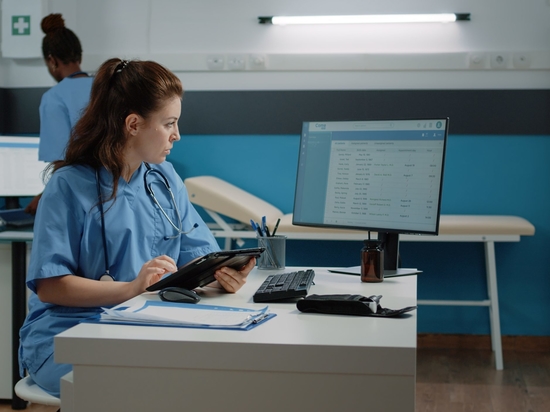
#Industry News
The Importance of Data Security in Healthcare: Protecting Patient Privacy
Data security has become one of the top priorities for the healthcare industry. Learn about the most critical threats here.
As healthcare providers become increasingly reliant on data to find better solutions and treat patients more effectively, it has also become more critical to protect this data from cybercriminals.
Healthcare groups have had to invest more in data security, the process of protecting data from loss, corruption, or outside intrusion. Under HIPAA regulations, fulfilling the requirements of data security, such as access control, transmission security, and file duplication is just as important as giving patients the right medicine.
In today’s article, we’ll break down the basics of the subject, the top risks, and best practices for ensuring data security in healthcare.
Data Security vs. Data Privacy vs. Cybersecurity
Given their similarities, it can be easy to mix up data security, data privacy, and cyber security. While the three fields operate in the same space, they are distinct categories and should be approached as such.
Data Security vs. Data Privacy
Data privacy vs. data security is defined by their differing focuses; data privacy is about keeping data confidential, while data security is about protecting it from malicious activity. Data can be confidential but still be corrupted or destroyed, such as by a cyberattack that wipes a company's database.
Data Security vs. Cybersecurity
Data security is a subcategory of cybersecurity, which focuses on protecting computer systems, networks, and devices along with data. Data security’s purview is ensuring the confidentiality, integrity, and availability of data, while cybersecurity is concerned with protecting the entire digital network.
Data Security Risks and Threats
Given how valuable private health information is, cybercriminals frequently target healthcare groups for theft or ransom. The most common threats to data security in healthcare include:
Accidental exposure: Human error can lead to data being shared with unauthorized groups or individuals. This could include sending an email to the wrong address or losing a data storage device.
Phishing and social engineering: The most common attack on a group’s data security relies on tricking people into providing private information. A phishing scheme will try to fool healthcare workers into revealing sensitive information, such as passwords or login credentials. The hacker can then use this information to compromise the entire network.
SQL Injection: Standard Query Language requests are the standard form of communication with an application’s database. An SQL will include a set of parameters that instruct the database on what records it should bring up. For example, a healthcare provider could search the database for every patient with a heart condition, over the age of sixty, or has an appointment scheduled for this week. An SQL injection adds malicious code to a query to access or delete information on the database.
Ransomware: Ransomware is a type of malware that infects devices and encrypts the stored data, making it useless without the matching decryption keys. The attackers will then issue a ransom, demanding payment for the keys. If unchecked, ransomware can rapidly spread and infect a network, leaving organizations without their irreplaceable data.
Data Security Solutions and Best Practices
Given the ongoing threat of cybercrimes targeting their data, healthcare groups must take the right steps to protect themselves. The following are the most important best practices that groups can embrace to ensure their security.
Access control: The first step towards data security is controlling who can access it and what they can access it from. This includes both physical and digital access. For example, healthcare facilities often require workers to carry RFID tags that let them log into their medical-grade computers before accessing patient records. This ensures that only authorized employees can access the facility’s network and data.
Data encryption: A major requirement under HIPAA is that private health data is encrypted while in storage. This means the data has been converted from a readable to an unreadable format and can only be decrypted with the correct key. Even if criminals can access or steal the data, they cannot read or interact with it.
Data loss prevention: Physical and digital redundancies help ensure that if data is compromised or destroyed, there are backups to rely on. Storing data off-site or in multiple servers ensures that backups will be available even if a cyberattack or a natural disaster damages the primary copy.
Incident response: Incident response plans are the preparations for a data breach. This means having a team of professionals with multiple skill sets, including IT, legal, PR, and more equipped with the right tools. This will let them detect, analyze, contain, and destroy data intrusions and communicate with other stakeholders throughout the process.
Vulnerability assessments: Often, the best way to identify vulnerabilities in a security system is to put it through a simulated attack. This can include intrusion attempts by “whitehat” hackers looking for weaknesses, response drills that test how employees react to a data outage, and consulting with third-party specialists.
Data Security with Cybernet Manufacturing
As more and more companies embrace data to deliver better care and improve patient outcomes, data security in healthcare will only become more and more critical. Fortunately, adopting the right tools and techniques can help ensure security and prevent breaches from occurring.





